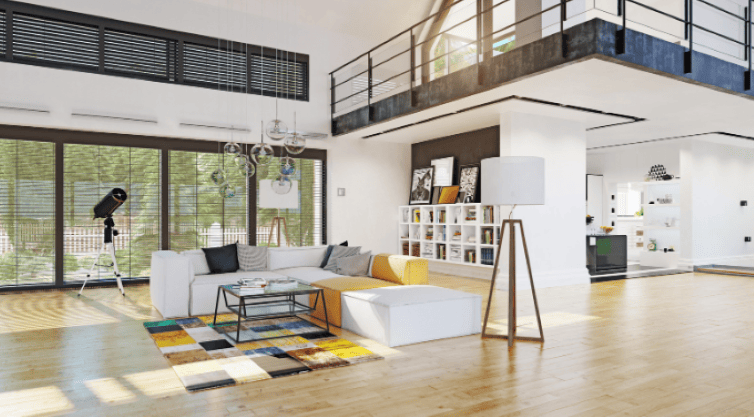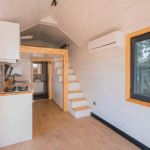
Imagine living in a tiny house, cozy and perfect for you, surrounded by nature. Now, think about how great it would feel if your little home also helped the Earth! That’s what happens when you use eco-friendly materials to build your sustainable tiny house. It’s like giving the planet a big hug while creating a special place for yourself. In this article, we’ll explore some amazing materials that are kind to our environment and perfect for building your dream tiny home.
Sustainable Wood
Wood is a popular choice for tiny houses, but not all wood is created equal. Sustainable wood comes from forests that are carefully managed so that trees can keep growing and the forest stays healthy. Look for wood with certifications like FSC (Forest Stewardship Council) which means it’s good for the environment. Bamboo is another great option. It’s not just for pandas – it’s a strong, fast-growing plant that makes fantastic floors and walls for your tiny house.
Recycled Steel
Recycled steel is a robust and eco-friendly choice, offering strength and durability for tiny house frames. By opting for recycled steel, we reduce mining and pollution, contributing to environmental protection. Its use in construction ensures a sturdy and safe tiny home, blending strength with sustainability.
Insulation: Sheep’s Wool and Cork
Keeping your tiny house warm or cool is important. Insulation made from sheep’s wool is not just for sweaters – it’s also great for walls! It’s natural, breathable, and keeps the temperature just right. Cork, made from the bark of cork oak trees, is another fantastic insulator. It’s renewable because the tree bark grows back, making it a super eco-friendly choice.

Eco-Friendly Glass
Eco-friendly windows, such as double or triple-glazed ones, are ideal for tiny houses. These windows feature two or three glass layers, effectively retaining heat in winter and keeping it out in summer. This thermal efficiency not only conserves energy but also enhances the comfort of your tiny home, making it a cozy and sustainable living space throughout the year.
Green Roofing
Green roofs, adorned with plants, are more than just visually appealing; they offer significant environmental benefits. They naturally cool your house, enhance air quality, and provide a habitat for birds and bees, contributing to biodiversity. These living roofs not only add a unique aesthetic to your home but also play a crucial role in creating a more sustainable and ecologically friendly living space, blending functionality with natural beauty.
Sustainable Flooring
When selecting flooring for your tiny house, consider sustainable options like cork, bamboo, or reclaimed wood. These materials are not just long-lasting but are also sourced responsibly. Reclaimed wood, in particular, brings a unique aspect, infusing your home with history and character. By choosing these eco-friendly flooring options, you contribute to sustainability while adding distinct style and durability to your tiny house.
Natural Paints and Finishes
Regular paints often contain harmful chemicals, but natural paints are a safer, more eco-friendly alternative. Made from materials like clay, chalk, and plant dyes, these paints are not only non-toxic to humans and the environment but also aesthetically pleasing. Opting for natural paints ensures a beautiful finish in your space while maintaining a commitment to health and ecological well-being, blending beauty with environmental responsibility.

Smart Water Systems
Water is precious, especially in a tiny house. Using a smart water system can help you save water and reduce waste. Rainwater harvesting systems collect rain to use for things like watering plants or even flushing toilets. Greywater systems recycle water from your sink and shower to use again for non-drinking purposes. These systems are not only eco-friendly but also super cool for a sustainable lifestyle.
Energy-Efficient Appliances and Lighting
In your tiny house, every little bit of energy counts. Energy-efficient appliances like refrigerators, cookers, and washing machines use less electricity and help the planet. LED lighting is another great choice. It lasts a long time and uses very little energy compared to regular bulbs. These appliances and lights are smart choices for a sustainable tiny home.
Solar Panels and Renewable Energy
Imagine your tiny house powered by the sun! Solar panels can turn sunlight into electricity for your home. This means you can use clean energy from nature instead of relying on fossil fuels. Wind turbines are another option for renewable energy, especially if you live in a windy area. Using these technologies can make your tiny house a powerhouse of sustainability.
Conclusion
Building your tiny house with eco-friendly materials is a wonderful way to live simply and sustainably. Each material we’ve talked about not only helps the planet but also adds its own special touch to your home. From the sturdy frame of recycled steel to the cozy insulation of sheep’s wool, every part of your tiny house can tell a story of sustainability. And remember, when you choose these materials, you’re not just building a house; you’re building a future that’s healthier for our Earth. Let’s make our tiny houses a big step towards a greener, happier world!






